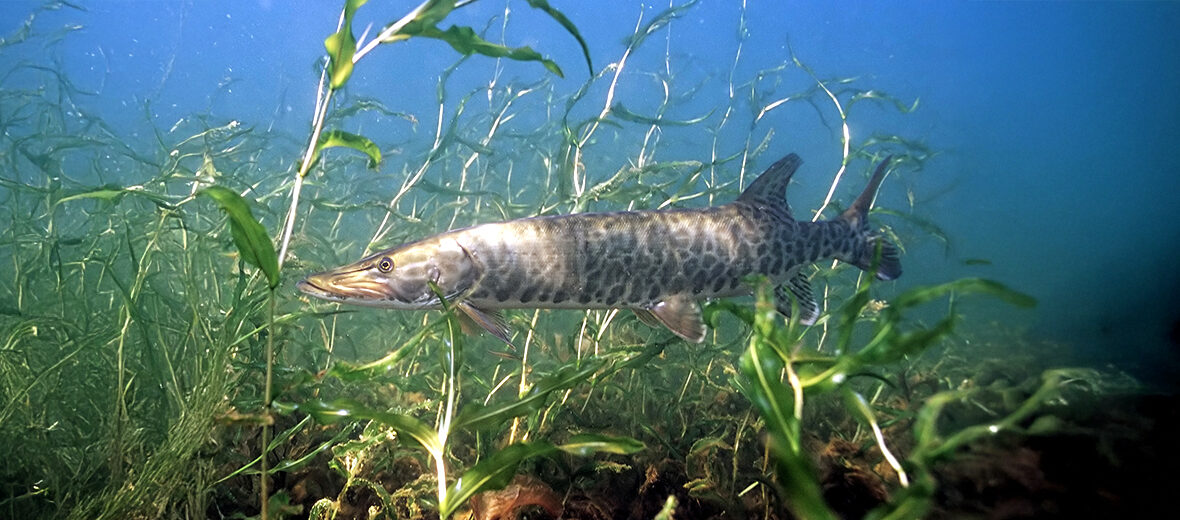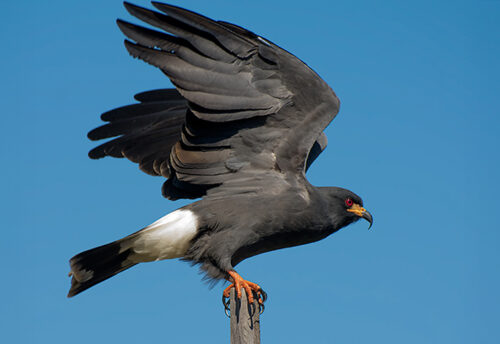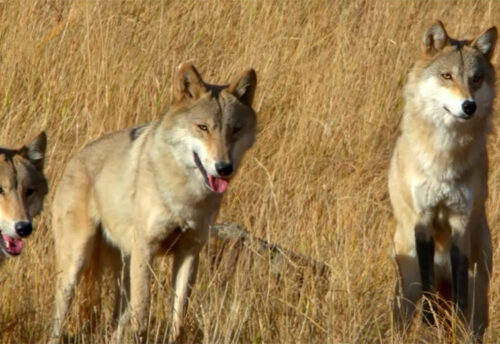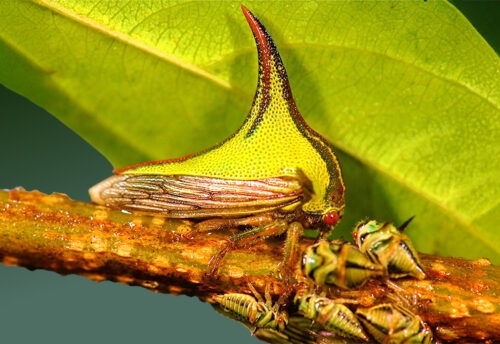
The muskellunge, aka muskie, musky, ski, or lunge, is the largest predatory species of pike in North America. Being the largest pike also has its disadvantages, too. These fish are threatened by habitat loss and destruction at the hands of dams; land pollution; water pollution; overfishing; invasive species, in the form of northern pikes; and diseases in the Great Lakes regions, such as piscirickettsia (musky pox) and viral hemorrhagic septicaemia (VHS). However, despite all these threats, they are abundant enough to be listed as Least Concern by the IUCN. Their population trend is listed as stable.
First the Stats…
Scientific name: Esox masquinongy
Weight: Up to 67.8 lbs.
Length: Up to 5.25 feet
Lifespan: Up to 30 years
Now on to the Facts!
1.) The name “muskellunge” hails from the Ojibwe words maashkinoozhe which translates to “great fish”, maskinoše, mashkinonge, or mji-gnoozhe, which translates to “bad pike”, “big pike”, or “ugly pike” respectively.
2.) Before settling on the current common name “muskellunge”, there were approximately 94 common names applied to this species, including but certainly not limited to: maskinonge, maskalonge, mascalonge, maskalung, masquenongez, milliganong, muskelunge, muscallonge, muskallonge, and muskinunge. This rivals the numerous names given to pumas.
3.) In locations where muskie have been introduced, like Maine, anglers are encouraged not to release the fish back into the water due to their negative impact on native populations of trout and other smaller fish species.
4.) These fish are found in southeastern Canada as well as eastern and northeastern United States in lakes and large rivers. They have even spread as far west as Utah, in the hybridized tiger muskellunge.
5.) They are ambush predators that will quickly bite their prey and then swallow it head first. These fish are the top predators in any body of water where they occur and they tend to eat larger prey than most other freshwater fish.
But wait, there’s more on the muskellunge!
6.) All varieties of freshwater fish are on the menu. They will also take insects, muskrats, rats, mice, frogs, salamanders, and the occasional duck.
7.) There have been reports of attacks on dogs and even humans. However, without actual proof these claims are merely tales.
Did you know…?
Muskies are able to take prey up to 2/3 their body length, due to their massive stomachs.
8.) These critters are cathemeral (active both day and night).
9.) Females are capable of producing up to 400,000 eggs each season.
10.) Once the eggs are laid and fertilized, the parents leave them to their own devices. So, most are eaten before they even hatch.
But wait, there’s still more on the muskellunge!
11.) The eggs that are are not eaten by fish, insects, or crayfish hatch in up to 2 weeks.
12.) Juveniles grow quickly and can reach upwards of 12 inches in just their first year.
13.) Being apex ambush predators, adults have basically zero predators, sans humans and perhaps bald eagles.
14.) Juveniles have to fend off attacks by larger muskies, northern pikes, bass, trout, and birds of prey.
Now a Short Muskellunge Video!
Be sure to share & comment below! Also, check out the Critter Science YouTube channel. Videos added regularly!

Want to suggest a critter for me to write about? Let me know here.
Some source material acquired from: Wikipedia & IUCN
Photo credit: Eric Engbretson



